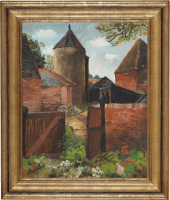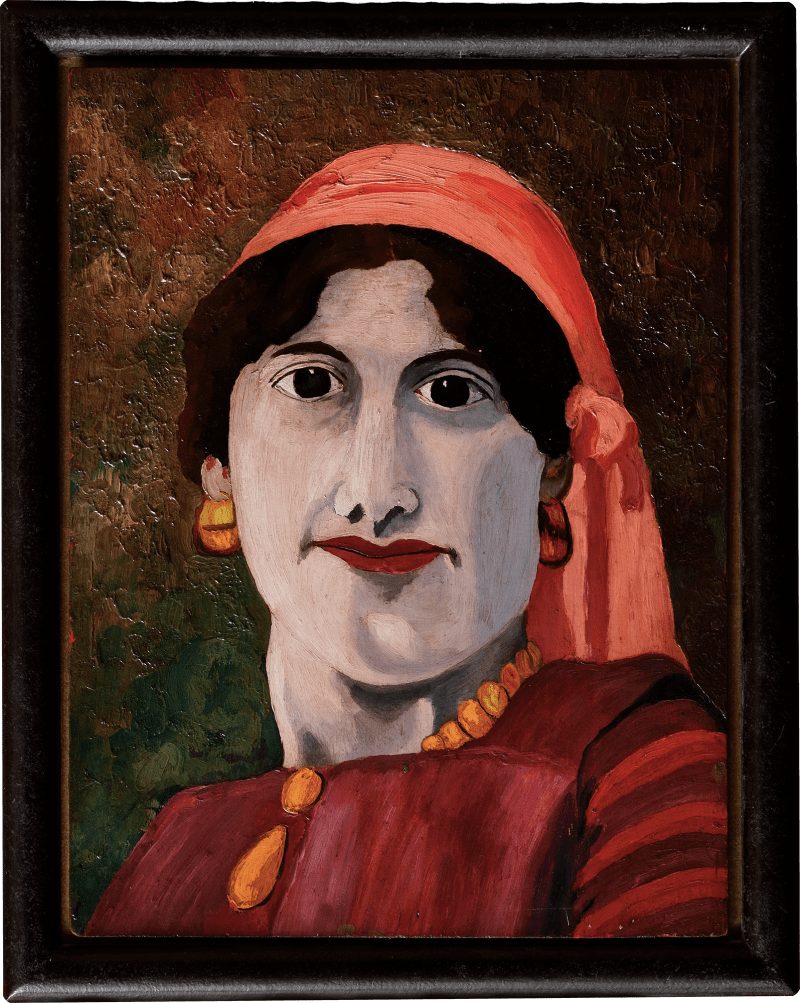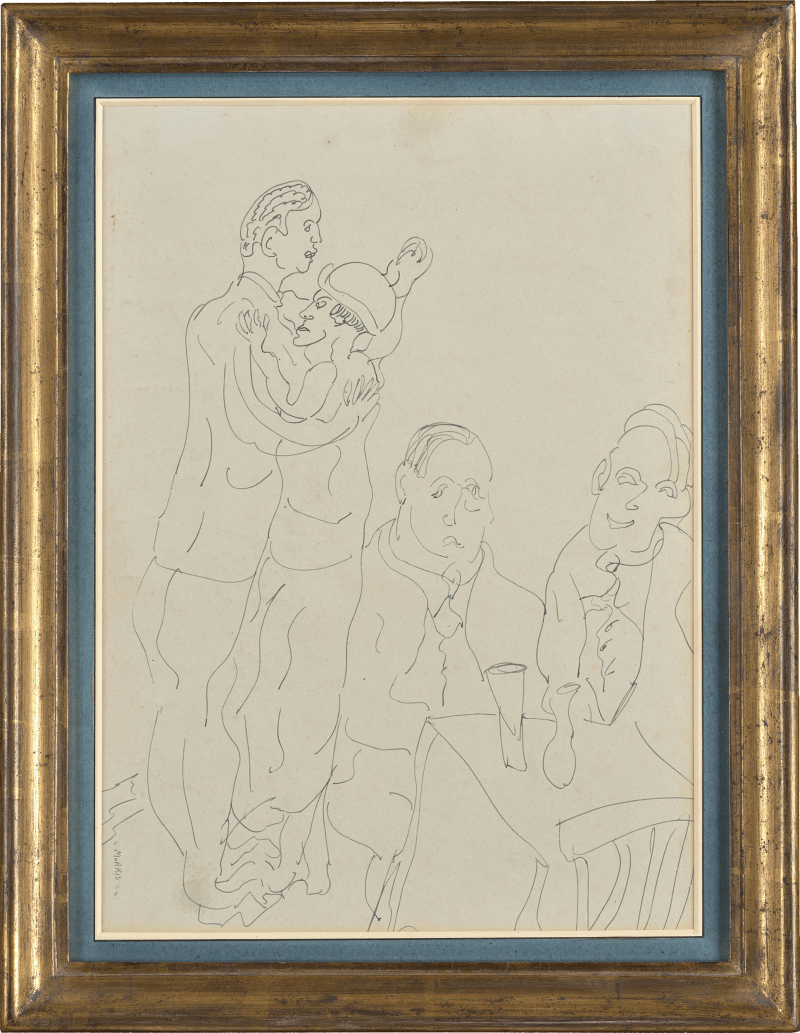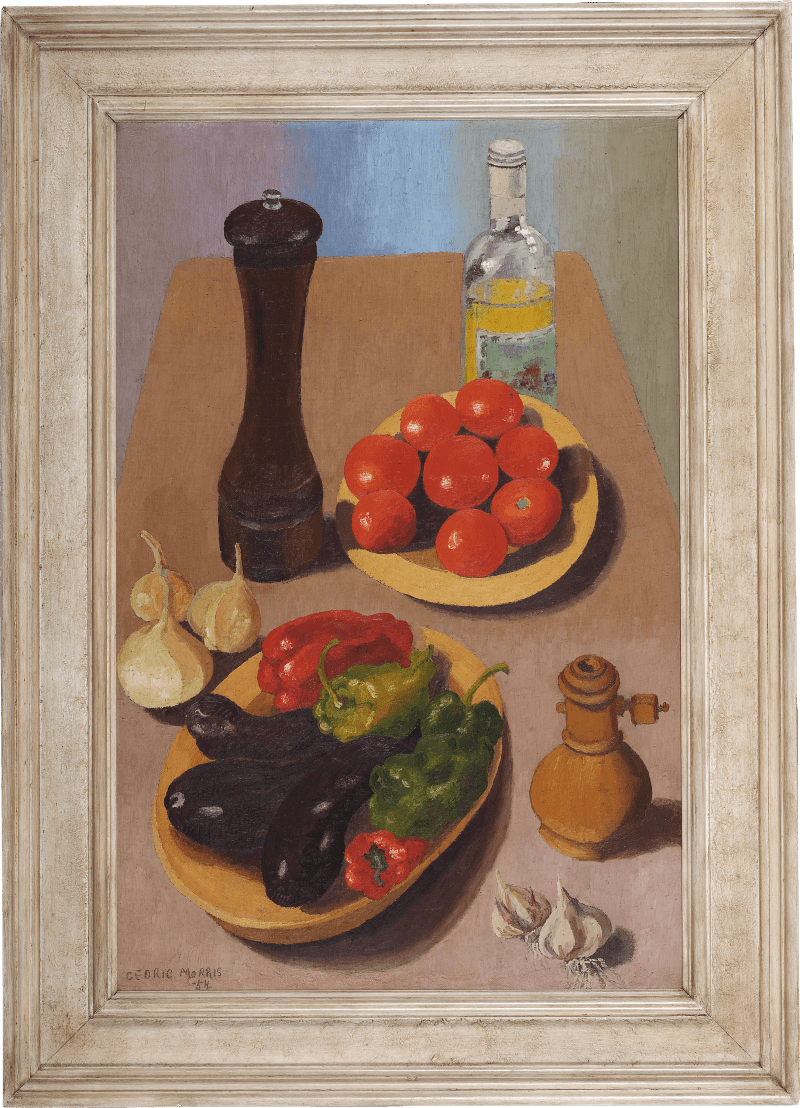This characterful view of the outbuildings at Benton End was painted in the 1940s, soon after Cedric Morris and Arthur Lett-Haines relocated there from Pound Farm. In this work Morris has exaggerated the contours of each brick, delighting in their rough surface texture, and capturing their distinctive colour in his typically direct manner.
It was at Benton End that the couple ran the East Anglian School of Painting and Drawing, an alternative and progressive art school that saw the education of artists such as Lucian Freud, Maggi Hambling and Lucy Harwood. At the house, artists could work independently and free from the traditional hierarchical structures that dominated the London art schools at the time. Morris and Lett aimed to create an environment characterised by the respectful exchange of ideas and pure freedom of expression when creating art. Their guidance for young students was thoughtful and encouraging rather than purely instructive and rigorously disciplined. This enabled many young artists to...
This characterful view of the outbuildings at Benton End was painted in the 1940s, soon after Cedric Morris and Arthur Lett-Haines relocated there from Pound Farm. In this work Morris has exaggerated the contours of each brick, delighting in their rough surface texture, and capturing their distinctive colour in his typically direct manner.
It was at Benton End that the couple ran the East Anglian School of Painting and Drawing, an alternative and progressive art school that saw the education of artists such as Lucian Freud, Maggi Hambling and Lucy Harwood. At the house, artists could work independently and free from the traditional hierarchical structures that dominated the London art schools at the time. Morris and Lett aimed to create an environment characterised by the respectful exchange of ideas and pure freedom of expression when creating art. Their guidance for young students was thoughtful and encouraging rather than purely instructive and rigorously disciplined. This enabled many young artists to flourish and find their individual style through explorative means whilst simultaneously establishing close relationships and lifelong friendships facilitated by the famous Benton End meals and parties.
One talented student who passed through Benton End was Lucy Harwood, whose work is only now beginning to gain the recognition it deserves. Her style was broad and loose and owes much to Morris’s direct approach. The present work was gifted by Morris to Harwood, and it remained in the possession of her descendants until recently. On the reverse is a striking still-life which has been attributed to Harwood’s hand.











